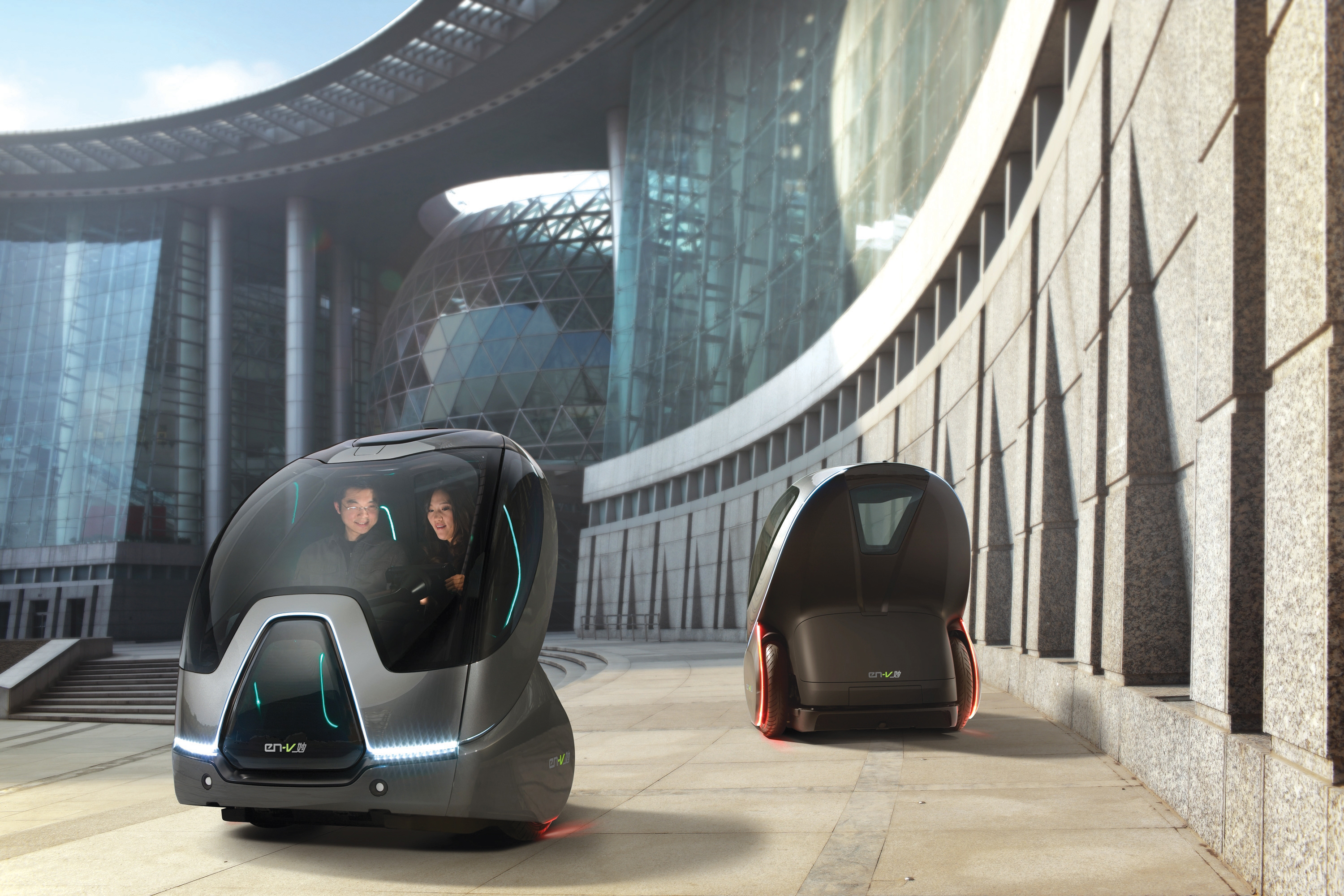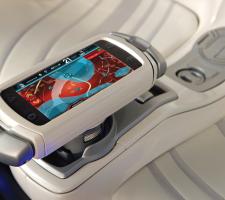
EN-V demonstrates that the right combination of sensors and communications means not every car on the highway need to be equipped with the same levels of technology (Picture: GM Corp)
Dedicated Short Range Communications technology, says Cisco's Paul Brubaker, is not by itself progressive enough to sustain long-term innovation in the connected mobility environment - and yet IPv6 and other developments remain largely ignored by policy-makers
The recent Shanghai Expo offered a glimpse of the future of connected transportation - at least in the form thatIt's not the first time that GM has laid out a rather prescient vision of the future; GM designer and transportation technology pioneer Norman Bel Geddes foresaw the interstate highway system in something he called the Futurama at New York's 1939 World's Fair. Over 60 years apart, both exhibits offer autonomous driving as an objective although the more recent one is different in that much of its technology actually already exists.
GM's working prototype of a personal autonomous vehicle is called the Electric Networked-Vehicle (EN-V). It is pronounced "envy", and for good reason. As the name suggests, the vehicle relies on pervasive wireless broadband communications technology to achieve a safe, efficient and entertaining transportation experience. The connectivity basics behind the prototype can also apply to other modes of transportation and manufacturers' vehicles but if this vision is going to become a reality the global transportation community must focus on commercial development and deployment.
Mobile brilliance
EN-V is a brilliant convergence of communications, sensor and entertainment technologies - a comfortable, safe, clean cocoon in which people can work, communicate with colleagues, family or friends or amuse themselves with games, music or movies whilst zipping down the highway to their pre-programmed destination on the most efficient and effective course. Distracted driving incidents and car crashes become increasingly rare, if not entirely eliminated, and because this is the right combination of sensors and communications not every car on the highway need be equipped with the same level of technology; EN-V can peacefully and safely share the roads with vehicles of an earlier vintage.But how important is wireless broadband communications technology to enabling the future as laid out by GM? While the prototypes are indeed working, the full scope of the vision will require new levels of wireless broadband to enable the rich video applications and Internet Protocol version 6 (IPv6)-enabled infrastructure and sensor development and deployment to deliver the autonomous driving and convenience applications.
New levels of broadband
Clearly the future of safe, convenient, productive and entertaining travel is going to require new levels of wireless broadband connectivity. The good news is that it is coming fast, mostly driven by consumer and commercial markets that are increasingly demanding broadband-enabled applications always available on any device; think about being able to access streaming, real-time HD content on your PDA. Entertainment is also driving demand as consumers go after video and interactive 3D gaming on mobile devices that will also require new levels of wireless broadband. The demand is there and people have shown a willingness to pay for it. It's the consumer applications that are driving the migration to Worldwide Interoperability for Microwave Access (WiMax) championed byRunning in parallel
One of the most interesting things about the EN-V is that it actually includes 802.11p Dedicated Short Range Communications (DSRC) technology as part of a comprehensive collision avoidance architecture; an architecture that also makes heavy use of sensor technology. It is clear, however, that IP-based wireless communications capabilities are growing at a rapid pace and consumer demand will drive deployment of more robust capabilities. To gauge consumer interest in this new level of mobile broadband connectivity and applications, one need only look at unmet demand forMobility and vehicle applications are expected to be increasingly enabled through the deployment of IP-based WiMax, LTE and 4/5G communications technologies. A number of vehicle-based working groups have been established to examine and plan for this convergence. These infrastructure upgrades are relatively easier to deploy versus creating new infrastructure as they can be installed in addition to or alongside existing infrastructure by the service providers who own them.
New levels of wireless broadband connectivity are the key to enhancing and enabling connected transportation not just for passenger cars but for commercial and transit vehicles as well. This level of connectivity in combination with improved sensor technology will dramatically improve situational awareness and enable new, exciting applications that employ common, commercially viable infrastructure and newly accessible data.
Troubled gestation
It is both interesting and troubling that few within the connected vehicle community are adopting this broader, inclusive and more holistic vision that more accurately reflects deployment scenarios. Many, particularly those in the US, have chosen to ignore the wireless broadband advances at or just over the horizon. They continue to almost exclusively push DSRC standards that have been in use since the mid-1990s. Rather than challenge the status quo and look to leapfrog capability there seems to be a growing consensus on adopting the slowly evolving technology and standards that are 802.11p DSRC.While it is likely that the latency benefits of DSRC will be exceeded in the near future thanks to advances in 4G and 5G wireless communications capabilities, there are good reasons for including DSRC in today's deployable safety applications: the US
IPv6
Some of the most exciting applications will be developed as secure wireless broadband becomes more mainstream. One of the key enablers will be deployment of IPv6, which was created primarily to address the shortage of internet addresses caused by the proliferation of enabled devices and sensors. The new addresses will use 128 bits versus the current 32-bit addresses used under the current IPv4. This is important for a variety of reasons, including the robust enablement of IP security. The US Department of Defence has mandated migration to IPv6 to enable something they call 'comms on the move', which allows for more devices and sensors to have internet addresses and the creation of self-healing secure mesh networks.Combine IPv6 developments with those envisioned for broadband wireless communications and enabled applications and it becomes increasingly clear that communications-managed transportation can and should be a reality. This brings us back to the EN-V: imagine strapping into your electric vehicle, entering your destination, then launching your web browser to start your work day as your car is tooling down the street to your first appointment following the most efficient route and avoiding traffic and obstacles - perhaps even safely platooning on dedicated lanes. Sophisticated sensors and communication technology keep your car from smashing into obstacles or hitting pedestrians while you catch up on the latest news. You safely co-exist with other cars that are not equipped with the latest technology.
These are not applications that will be enabled by a solely DSRC environment. For DSRC-enabled safety to become a reality, multiple cars must be equipped. Moreover, if DSRC-enabled intersection collision avoidance is to become reality it will require a major investment in infrastructure deployment. By thinking creatively about how to use current and future IP-enabled commercial broadband deployment with onboard and infrastructure sensor technology, there is a much more efficient and effective way to make travel smarter, safer and greener.
Ripe for exploitation
One thing is clear: mobile broadband is coming and should be exploited to dramatically improve the global movement of people and goods. There are a number of other technologies that can also complement and add value to the transportation system, such as in-vehicle, roadside and embedded sensors, video analytics, Bluetooth detection and RFID. These sensors and systems will also contribute significantly to the amount of transportation-related data that is generated. Making sense of this and making it actionable immediately and in the long term presents us with significant opportunities in all senses of the word.Ensuring that the data is open and accessible to any interested party should generate innovative new applications that can ride on top of an open communication infrastructure.
Data on commuting habits, that can easily be anonymised to protect privacy, combined with data related to population shifts, building permits, office vacancy and building trends would allow us to better understand the longer-term needs of commuters. That would allow us to make comprehensive, multimodal and informed investments in transportation infrastructure. It would also allow us to make better-informed public policy decisions, guiding behaviour that can alleviate congestion, improve safety and reduce vehicle emissions. This is just the beginning.
Closer than you think
Future generations of broadband wireless communications will fundamentally change how we commute and work.But first we need to be thinking about the platform and how to make it open, accessible and extensible. Entertainment into the vehicle may in fact lead to what ultimately becomes the true connected vehicle. Moreover, a combination of technologies, such as those enabling today's applications (self-parking, lane departure warnings, adaptive cruise control and so on), can be integrated into a holistic solution that makes autonomous driving a nearer-term reality. Combined with the next-generation communications technologies and the enablement of the IPv6-enabled 'Internet of Things', we're talking, as noted above, in terms of a decade.
If we can just stop thinking and working in silos, the promise of 21st century wireless communications and sensor technology will finally enable us to realise the 20th century autonomous driving vision of Norman Bel Geddes. It will be interesting to see how far these ideas and concepts have matured at the 2015 Global Expo in Milan.












